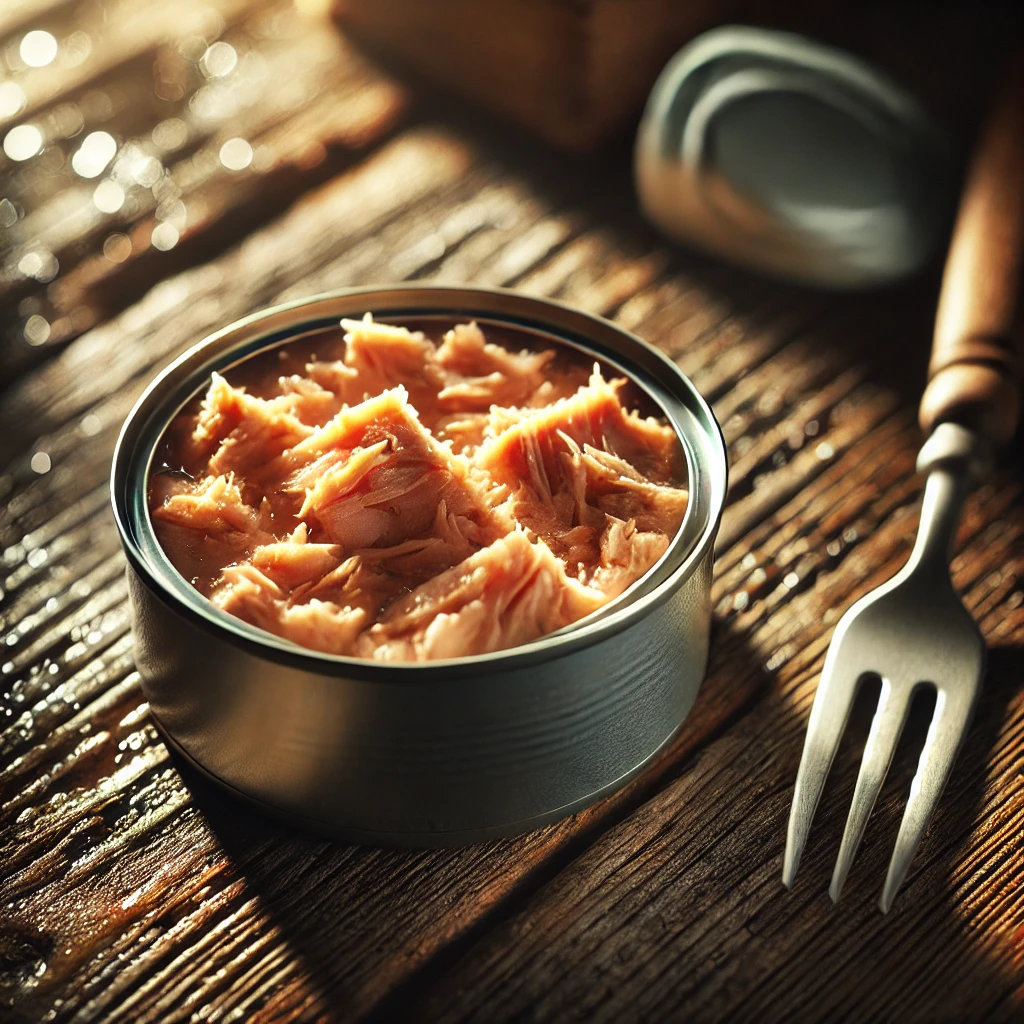How to Make the best Classic Tuna Salad Recipe
The tuna-based salad is a favorite for lunch that many Americans love. I remember my mom’s salad sandwiches. They were creamy, tender, and crunchy all at once.
It was a taste of home that made me happy. Now, I’m sharing this recipe with you. It brings back memories and adds joy to meals.

We’ll cover how to make the best salad. You’ll learn about choosing the right canned tuna and mixing the ingredients. This recipe is easy to follow, whether you’re experienced or new to cooking. It’s perfect for any meal.
Table of Contents
Why Tuna-based Salad Remains a Beloved Classic Dish
Tuna-based salad has been a favorite in American cuisine for many years. Its lasting appeal comes from its rich history, health benefits, and cultural impact. These factors have made it a staple in modern dining.
History of Tuna-based Salad.
The story of tuna-based salad starts in the early 1900s. Canned tuna became popular in the U.S. for its convenience and affordability. It quickly became a staple in kitchens, leading to creative recipes.
Tuna-based salad became a hit because it was easy to make and could be customized. It was a simple yet satisfying dish that everyone enjoyed.
Health Benefits of Tuna-Based Recipes
Tuna-based salad is not just tasty; it’s also good for you. It’s packed with omega-3 fatty acids, which are great for your heart and brain. Adding veggies and herbs makes it a balanced meal that supports your health.
Cultural Impact on Modern Dining
Tuna-based salad has become more than just a meal; it’s a cultural icon. It’s loved as a comfort food and is often found at picnics and gatherings. Its widespread popularity has made it a key part of American food culture.
Tuna-based salad’s journey from its humble start to its current status is inspiring. It has managed to stay relevant by adapting to new tastes and diets. This shows the enduring charm of this classic dish.

Essential Ingredients for the Perfect Tuna-based Salad
Making a classic tuna-based salad needs a mix of key ingredients. The canned tuna is the main ingredient. It can be chunk light or solid white tuna, and it’s full of protein.
A big dollop of mayonnaise is also important. It makes the salad creamy and brings all the flavors together. The mayonnaise adds a silky texture and boosts the salad’s taste.
- Celery is a must-have, adding a refreshing crunch and a subtle flavor. It goes well with the tuna.
- Onion, whether finely diced or thinly sliced, adds zest and depth. It contrasts nicely with the other ingredients.
The four main ingredients are canned tuna, mayonnaise, celery, and onion. With these, you can add more flavors like tangy capers or fragrant dill. This lets you make the salad your own.

“The secret to a great tuna-based salad lies in the balance of its ingredients – the tuna, the mayonnaise, and the crunchy vegetables that add texture and depth of flavor.”
Choosing the Best Canned Tuna for Your Recipe
Choosing the right canned tuna is key to a great tuna salad. You might like the rich taste of oil-packed tuna or the light taste of water-packed tuna. Knowing your options helps you pick the best tuna for your dish.
Different Types of Canned Tuna
Canned tuna comes in many types, each with its taste and texture. You can choose from albacore, skipjack, and yellowfin tuna. Knowing about these can help you pick the right one for your salad.
Oil-Packed vs. Water-Packed Tuna
When picking tuna, think about the packing medium. Oil-packed tuna is known for its creamy texture and strong flavor. Water-packed tuna is lighter and more delicate. Your choice depends on what you want your salad to taste like.
Top Brands Like Bumble Bee
Bumble Bee is a top brand in canned tuna. They focus on quality and sustainability. Their tuna products range from classic albacore to unique flavors. Checking out Bumble Bee can help you find the best tuna for your salad.
“The secret to a truly exceptional tuna-based salad lies in the quality of the canned tuna you choose.”
The Art of Preparing Fresh Vegetables
When making a classic salad, preparing fresh veggies like celery and onion is key. These crunchy, tasty additions can take your salad from good to great. Let’s look at how to clean, chop, and add these fresh vegetables to your recipe.
Start by rinsing and trimming your celery and onion before chopping them. This removes dirt and impurities, giving you a clean, crisp texture. For chopping, aim for small, uniform pieces that blend well with the tuna and other ingredients.
| Vegetable | Chopping Technique | Recommended Amount |
|---|---|---|
| Celery | Finely chop into 1/4-inch pieces | 1/2 cup |
| Onion | Dice into 1/4-inch cubes | 1/4 cup |
To get the perfect mix of flavors and textures, add the right amount of fresh vegetables to your salad. Start with the suggested amounts and adjust to your liking. The goal is to enhance the tuna, not overwhelm it.
By following these easy steps, you’ll make a salad that highlights the tuna and fresh vegetables. Enjoy the crunchy, flavorful bite of celery and onion in every bite!
Mastering the Mayo-to-Tuna Ratio
Finding the perfect balance in your salad is all about the mayo-to-tuna ratio. The right mix of these two ingredients is crucial for a creamy texture. Let’s look at different mayonnaise types and other binding ingredients to help you get it right.
Types of Mayonnaise to Consider
There are many mayonnaise options available. Full-fat mayo adds a rich flavor, while lower-fat or avocado-based ones are healthier. If you’re watching your cholesterol, try an egg-free, plant-based mayo. Choose one that complements the tuna’s taste and your preferences.
Alternative Binding Ingredients
Mayonnaise isn’t the only choice for binding your salad. Greek yogurt, mashed avocado, or Dijon mustard are great alternatives. They add creaminess without the calories or dairy.
Experiment with different mayonnaise or binding ingredients to find the perfect ratio. Start with a 1:1 ratio of mayonnaise to tuna. Then, adjust to your liking. With a bit of trial and error, you’ll make the best salad every time.
Adding Flavor Enhancers: Capers, Dill, and Lemon
Want to make your salad taste amazing? Try adding capers, dill, and lemon juice. These ingredients can turn a simple salad into a tasty treat. They add flavor and contrast to the creamy tuna.
Capers give your salad a salty kick. You can chop them finely or leave them whole for a fancy touch. Dill adds a fresh, green taste that goes well with tuna and mayo. A squeeze of lemon juice adds a zesty kick, balancing the richness.
Playing with these ingredients can make your salad even better. Start with a little and adjust to taste. The goal is to enhance the tuna’s flavor without overpowering it.

“The secret to a truly delicious salad lies in the perfect harmony of its ingredients. Capers, dill, and lemon juice are the unsung heroes that can elevate a simple dish into a culinary masterpiece.”
So, next time you make tuna-based salad, try these flavor boosters. Your taste buds will love it!
| Ingredient | Flavor Profile | Recommended Quantity |
|---|---|---|
| Capers | Briny, savory | 1-2 tablespoons, finely chopped |
| Dill | Herbaceous, slightly sweet | 2-3 tablespoons, finely chopped |
| Lemon Juice | Zesty, tangy | 1-2 tablespoons, or to taste |
Step-by-Step Tuna Salad Preparation Guide
Making the perfect salad is an art. It needs careful steps from draining the tuna to mixing it right. Each step is key to getting the right texture and taste. Let’s dive into the essential steps for a tasty salad.
Proper Draining Techniques
Draining the tuna well is the first step. Press the tuna against the can’s lid to get rid of extra liquid. Or, use a fine-mesh strainer to make sure it’s dry. This keeps the salad from being too wet or soggy.
Mixing Methods for Best Results
- Flake the tuna with a fork into small pieces. This makes the salad smooth.
- Slowly mix in the mayonnaise or other binding ingredient. Don’t overdo it to avoid a heavy salad.
- Add other ingredients like veggies or herbs gently. This keeps the tuna’s texture light.
Seasoning Tips and Tricks
Seasoning makes your tuna salad pop. Try different spices and herbs to find your favorite mix. A squeeze of lemon juice or zest can add brightness. A pinch of salt and pepper brings out the tuna’s natural flavor. Adjust the seasoning to taste, tasting as you go, for the perfect flavor.
By following these steps, you’ll make a tuna salad that looks great and tastes amazing. The key to a great salad is paying attention to every detail and putting your heart into it.
Creative Serving Suggestions and Pairings
Tuna-based salad is a versatile dish that can be enjoyed in many ways. It’s great as a sandwich filling or a refreshing salad topper. Let’s look at some inspiring ways to serve tuna salad.
Tuna-based Salad Sandwiches
Tuna-based salad is perfect for sandwiches. Try it on toasted whole-grain bread, flaky croissants, or mini brioche buns. Add diced apples, grapes, or celery for a crunchy twist.
Tuna-based Salad Lettuce Wraps
For a low-carb option, use crisp lettuce leaves like romaine or butter lettuce. The fresh greens pair well with the creamy tuna.
Tuna-based Salad Stuffed Avocado
Fill an avocado half with tuna salad. It’s a nutritious and filling snack or light meal.
| Serving Suggestion | Pairings |
|---|---|
| Tuna-based Salad Sandwich | Whole-grain bread, croissant, mini brioche buns |
| Tuna-based Salad Lettuce Wraps | Romaine or butter lettuce leaves |
| Tuna-based Salad Stuffed Avocado | Avocado halves |
These are just a few ways to enjoy salad. You can have it in a sandwich, wrapped in greens, or in an avocado. Serve it with fresh veggies, crunchy crackers, or a light salad for a tasty meal.
Storage Tips and Shelf Life
Storing your salad right is key to keeping it fresh and safe. Choose airtight, non-reactive containers like glass or BPA-free plastic. This stops air and contamination. Refrigerate it right after making, and eat it in 3-5 days for the best taste.
Proper Container Selection
For storing salad, go for airtight, non-reactive containers. Glass jars or BPA-free plastic are great. They keep freshness in and air out. Don’t use metal or aluminum as they can change the taste and texture.
Temperature Guidelines
Keeping the right temperature is vital for your tuna salad’s quality and safety. Always refrigerate it at 40°F to 140°F. Warm temperatures can cause bacteria, so don’t leave it out too long. When reheating, make sure it reaches 165°F to kill bacteria.
FAQ
What are the essential ingredients for a classic tuna-based salad recipe?
A classic salad needs canned tuna, mayonnaise, and celery. You’ll also need onion, eggs, lemon juice, dill, and capers.
How do I choose the best canned tuna for my tuna-based salad?
Look for canned tuna that’s either oil-packed or water-packed. Brands like Bumble Bee are known for quality. They can affect your salad’s taste and texture.
How do I properly prepare the fresh vegetables for my tuna-based salad?
Clean and chop your veggies well. Use celery and onion for the best texture and flavor. Getting it right is crucial.
What is the ideal mayo-to-tuna ratio for a creamy tuna-based salad?
For creaminess, use 1/4 cup of mayonnaise for every 5 ounces of tuna. Adjust to taste and dietary needs.
What flavor enhancers can I add to my tuna-based salad?
Add capers, dill, and lemon juice for extra flavor. They make your salad taste fresh and bright.
How should I properly store my tuna-based salad?
Store your salad in an airtight container in the fridge. This keeps it fresh and safe to eat.
